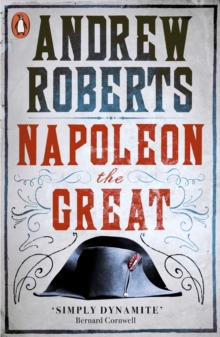
My inspiration was from one of Napoleon’s achievements. Fortunately, as this is quite a substantial biography, there was the opportunity to make it really stand out. This approach did, however, mean that the spine had to do a lot more work. The options which used only the bees and monogram pattern felt much stronger and we opted to pursue this route. I was delighted to be allowed to carry on with a cover without a title or an author name on it! The monogram (“N”) and the bee symbol stuck from the very beginning, in some versions combined with a title. I had shortlisted a few ornamental symbols and started combining them in different ways. Golden bees were discovered in 1653 in Tournai in the tomb of Childeric I, founder in 457 of the Merovingian dynasty and father of Clovis and as such were considered as the oldest emblem of the sovereigns of France. He chose it because in addition to signifying immortality and resurrection, it linked his new dynasty to the very origins of France.

The bee is one of the most recognisable symbols of Napoleon. From furnishing, military uniforms and equipment, to buildings, books and dishes, these symbols were embroidered, carved, engraved, printed or sculpted with an exquisite craftsmanship and in the most luxurious materials. His monogram, the eagle holding thunder, crowns of laurel or oak leaves – to name just a few – began to be seen everywhere. Borrowing from classical antiquity and early medieval French sources, he reinvented the symbols of power and defined the fashion of the Empire that he was building. As he rose to power Napoleon himself created a consistent iconography to represent and ‘settle’ his regime.

There was a wealth of material available to help me. Instead, it would take a symbolic approach, with the cover creating a sort of ‘brand’ for Napoleon. Very early on we decided that the cover shouldn’t feature any portraits, oil paintings, or battle scenes. From the heroic figure on the white horse to the short man with the characteristic velvet hat, hand stuck inside his coat… to the British public Napoleon has become a caricature of himself, almost a figure of comedy.įor the cover of Andrew Roberts’ book to capture the greatness of Napoleon, we needed to move away from these stereotypes. We all have a certain image that springs to mind when we think of Napoleon Bonaparte. She shares stories and symbols that inspired her striking design.

Its designer, Isabelle de Cat, had the daunting task of creating a cover that could do justice to the book and its legendary subject. In Napoleon the Great, Andrew Roberts takes on the challenge of exploring the life and work of one of the titans of modern history.


 0 kommentar(er)
0 kommentar(er)
